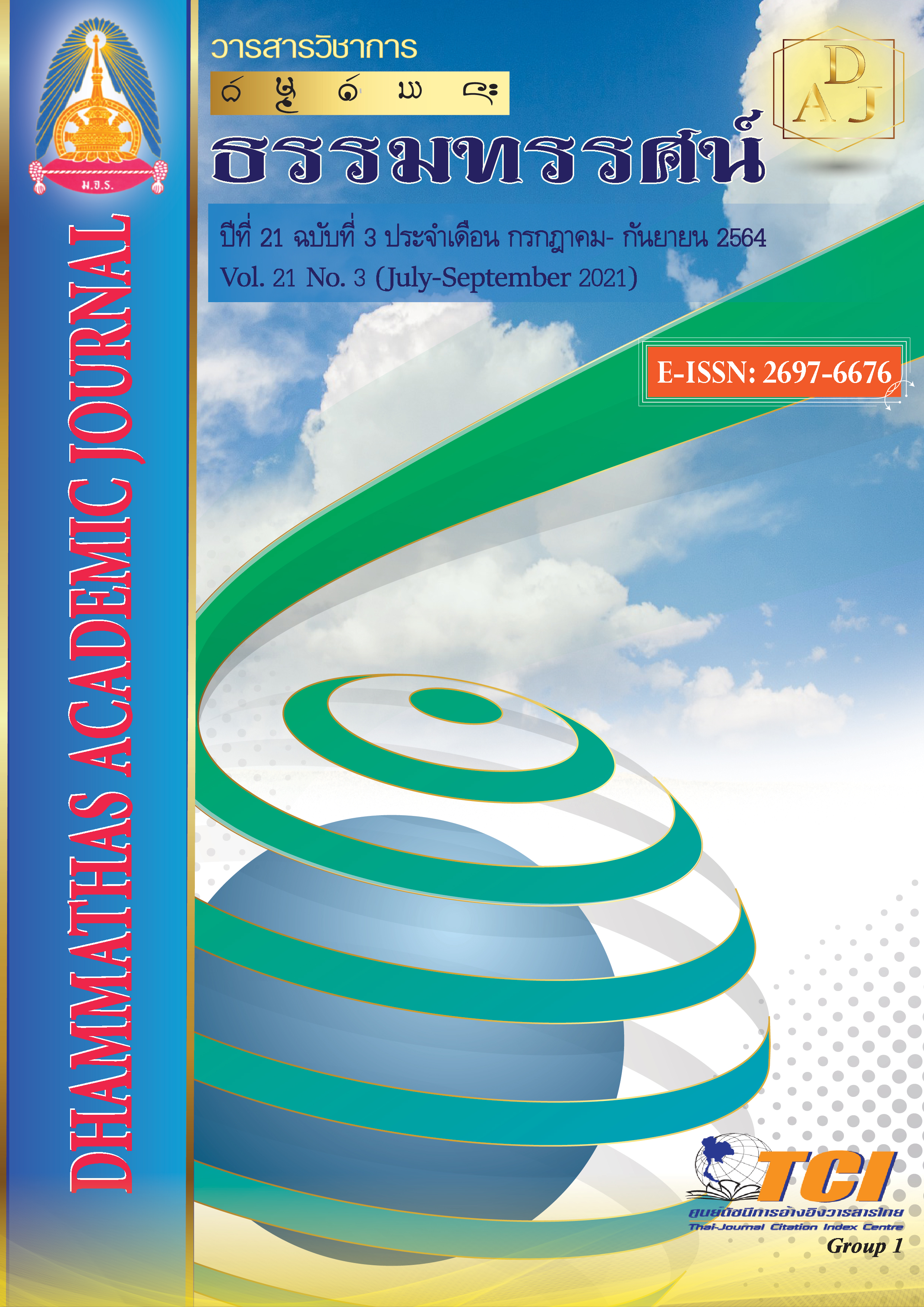Lan Chang Kingdom: Philosophy, Arts, Culture, Traditions and Way of Life of People in Mekong River Region
Main Article Content
Abstract
The objectives of this research were: 1) to study Lan Chang Kingdom (Million Elephants) and its collapse; 2) to study the philosophy, art, culture, traditions and way of life of people in the kingdom; 3) to study the influence of LanChang Kingdom on the way of life of people in Mekong River Region. This study was a qualitative research and its research instruments included in-depth interview and behavioral observation of 30 key informants. The obtained data were analyzed by using inductive descriptive method.
The research results were as follows:
LanChang Kingdom was located midway between the Mekong River and the mountains ‘Unnam’. It was established in the Khun Lor Majesty period. He has taken over the city of Java and established the city of Java as the capital city and renamed Java City to Chiang Dong - Chiang Thong. After the end of the reign of Khun Lor, Lan Chang Kingdom was later ruled by many kings. Until arriving in the reign of Chao Fa Ngum, he acquired Buddhism from Khmer as his national religion and invited the Phrabang Buddha image from Khmer to LanChang. After that, Chao Fa Ngum changed the name of Chiang Dong - Chiang Thong as Luang Prabang by the name of the Buddha image. LanChang Kingdom has been ruled for many eras until its collapse. The collapse of LanChang Kingdom was due to power conflicts and a lack of unity until the kingdom was broken into 3 parts: 1) Lan Chang Kingdom, Vientiane; 2) Lan Chang Kingdom, Luang Prabang; 3) Lan Chang Kingdom, Champasak. After that, Lan Chang Kingdom became colonized by Siam. In 1858, France occupied Lan Chang Kingdom on the Lao side, causing the Lan Chang Kingdom to be separated into two countries by taking the river Mekong as its border; the left bank of Mekong River is Lao PDR, the right bank of Mekong is Thailand. Finally, LanChang Kingdom collapsed.
The philosophy of LanChang Kingdom is pluralism. It is a combination of three concepts of spirits, Brahmanism and Buddhism. Art is a creative work to serve Buddhism, such as wall painting, Buddha relics and Buddha images etc. LanChang culture is divided into 4 aspects: material culture; moral culture, legal culture and social culture. Traditions are good things that LanChang people hold, inherited from their ancestors to the present, such as the Heet Sip-Song tradition and Phuk-Xiao tradition etc. The way of life is the practice of living together in LanChang Society from birth to death and such behaviors that have been passed down from generation to generation until becoming the identity of the LanChang people.
The influence of LanChang Kingdom on the way of life of the people of Mekong River Region is: 1) the belief in spirits based on the traditional beliefs of Lan Chang ancestors; 2) Brahmin beliefs; 3) beliefs according to Buddhism. All three beliefs also have an influence on people of the Mekong River Region in terms of philosophy, thoughts, beliefs, art, culture, traditions and it builds unity among the people of the Mekong River Region until Thailand and Laos have become brothers and sisters' homes up to now.
Article Details
References
ทองสืบ ศุกะมาร์ค (ปริวรรค). (2528). พงศาวดารลาว. กรุงเทพฯ: องค์การค้าคุรุสภาพ.
ปิยฉัตร สินธุสะอาด. (2540). สังคมล้านช้างตั้งแต่ปลายพุทธศตวรรษที่ 21 ถึงต้นพุทธศตวรรษที่ 23. (รายงานการวิจัย). กรุงเทพฯ: มหาวิทยาลัยธรรมศาสตร์.
พระครูภัทรสิริวุฒิ (วิทยา สิริภทฺโท/เที่ยงธรรม). (2556). ศึกษาพัฒนาและอิทธิพลของพระพุทธศาสนาในสังคมล้านช้าง. (วิทยานิพนธ์พุทธศาสตรดุษฎีบัณฑิต). พระนครศรีอยุธยา: มหาวิทยาลัยมหาจุฬาลงกรณราชวิทยาลัย.
พระสมศักดิ์ ปิยธมฺโม (อินทเสน). (2543). อิทธิพลของพระพุทธศาสนาที่มีต่อสังคมลาวในแขวงจำปาศักดิ์ สาธารณรัฐประชาธิปไตยประชาชนลาว. (รายงานการวิจัย). พระนครศรีอยุธยา: มหาวิทยาลัยมหาจุฬาลงกรณราชวิทยาลัย.
วิทย์ บัณฑิตกุล. (2555). ลาว: Laos. (พิมพ์ครั้งที่ 2). กรุงเทพฯ: สถาพรบุ๊คส์.

